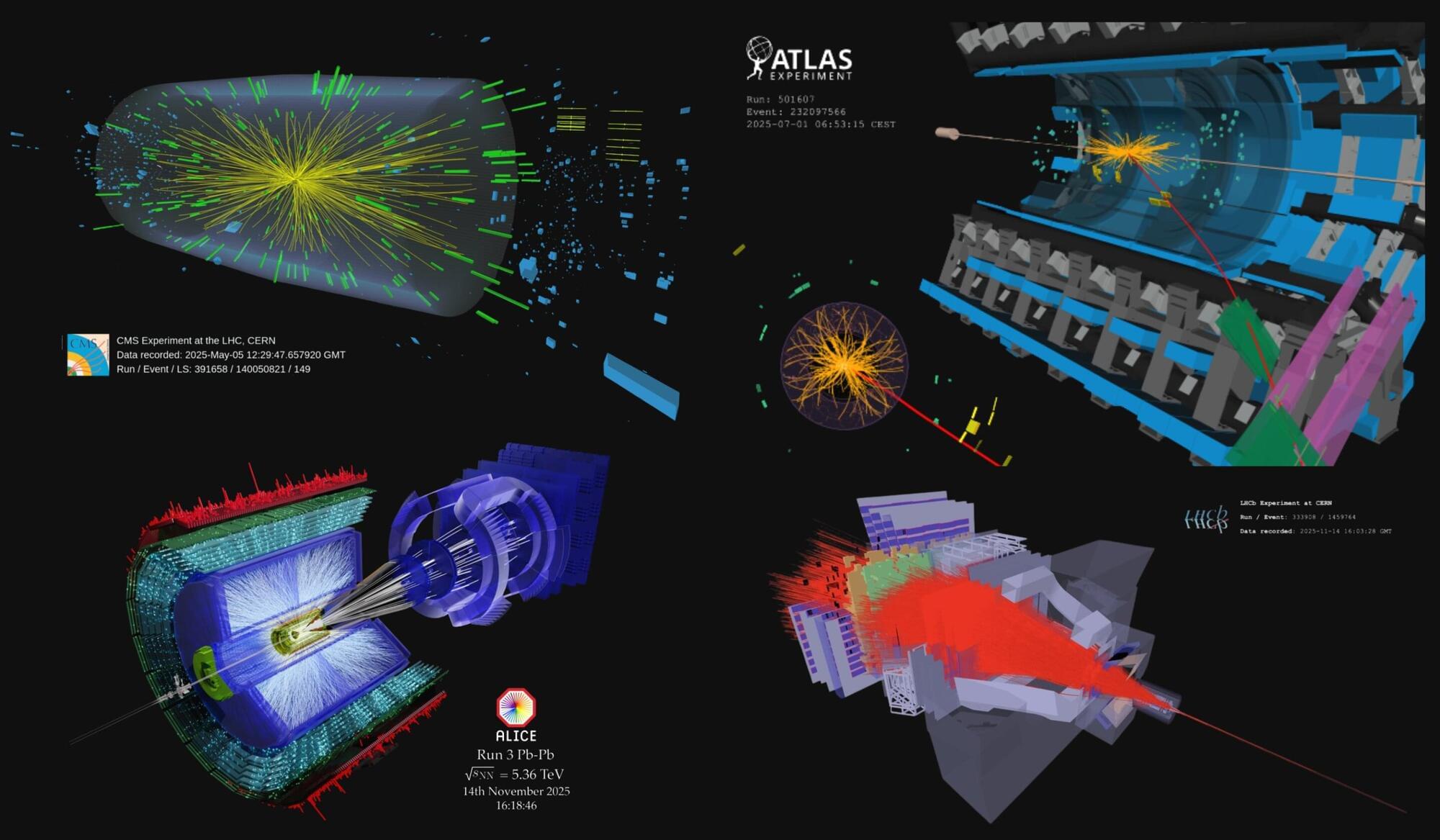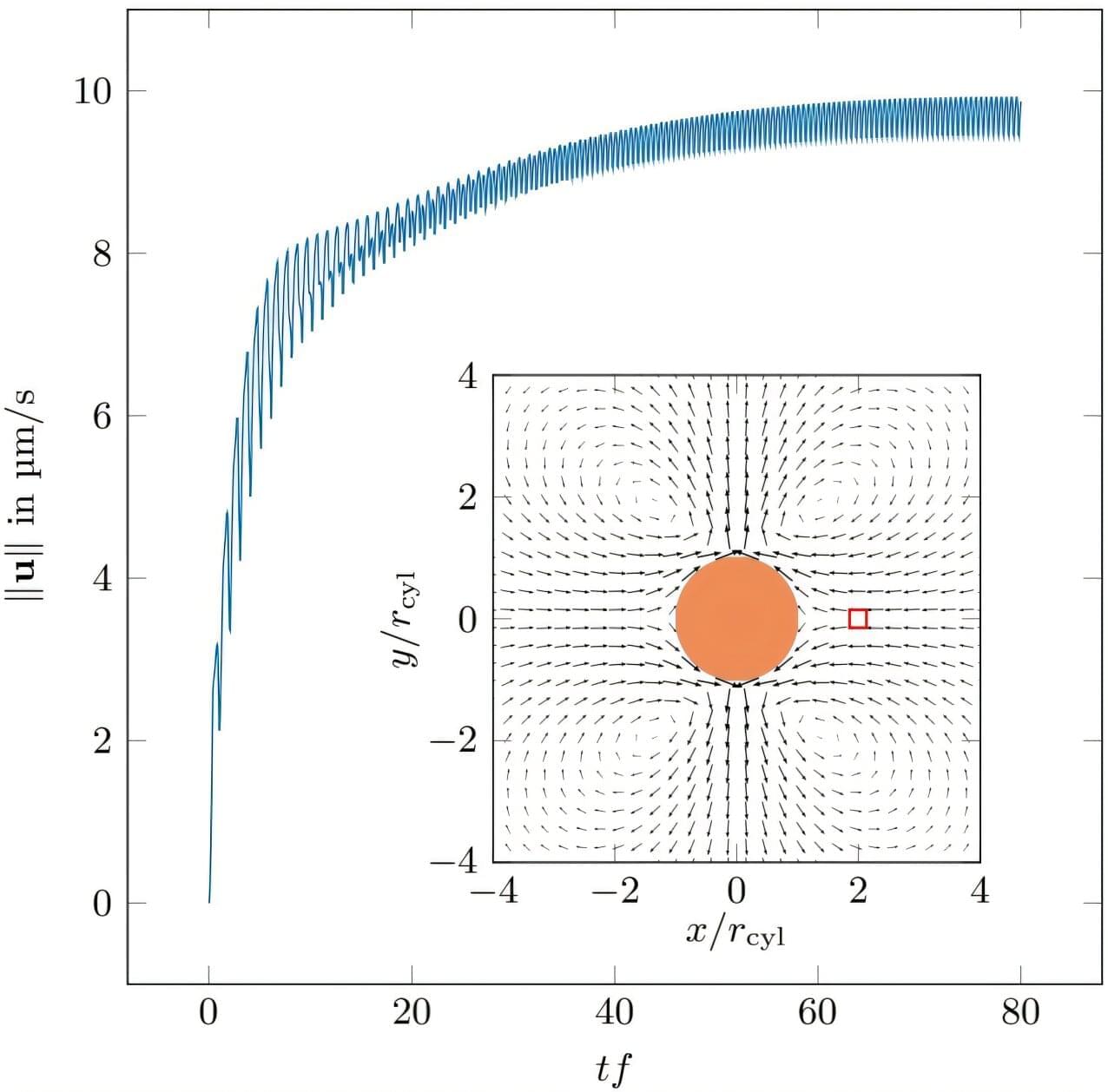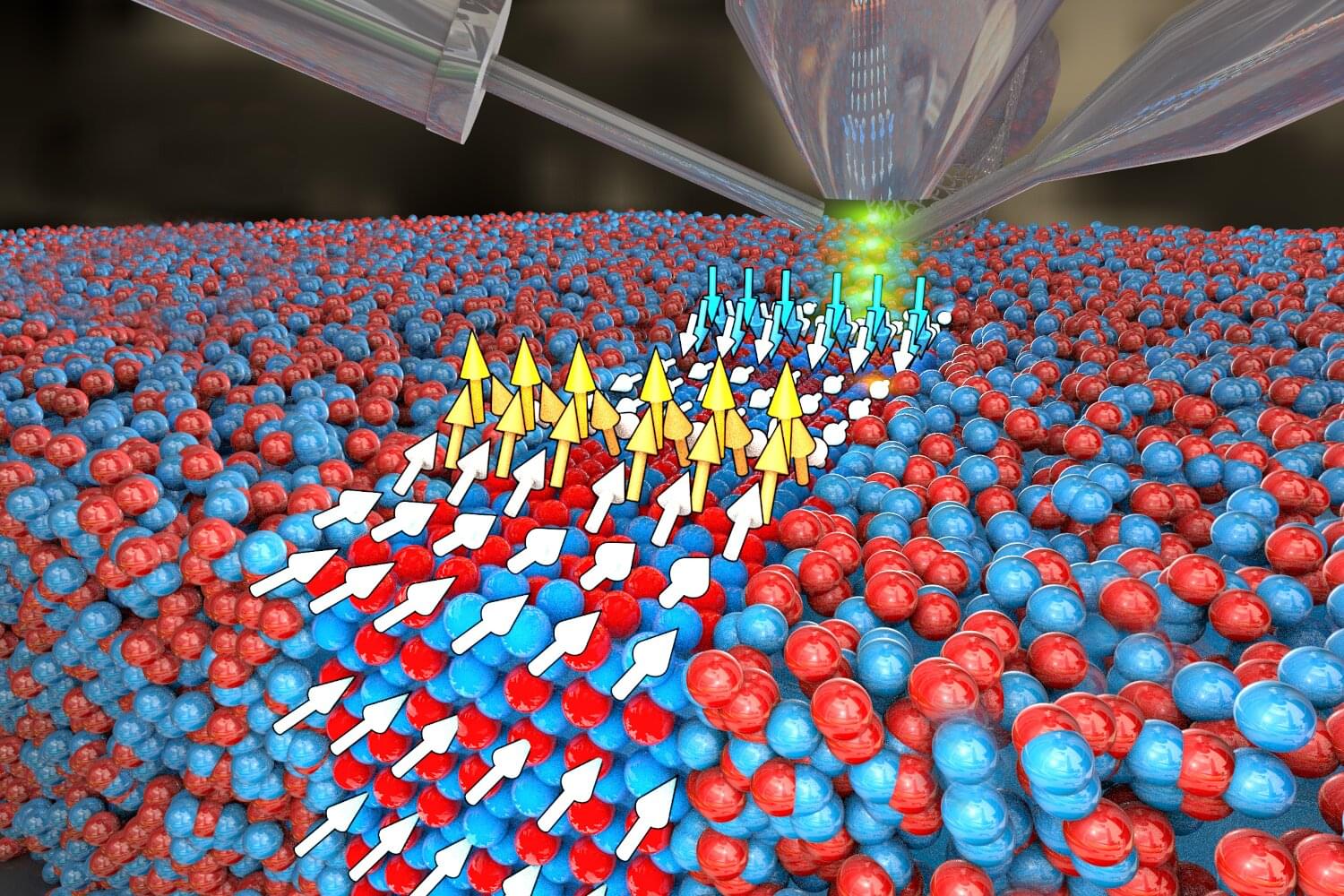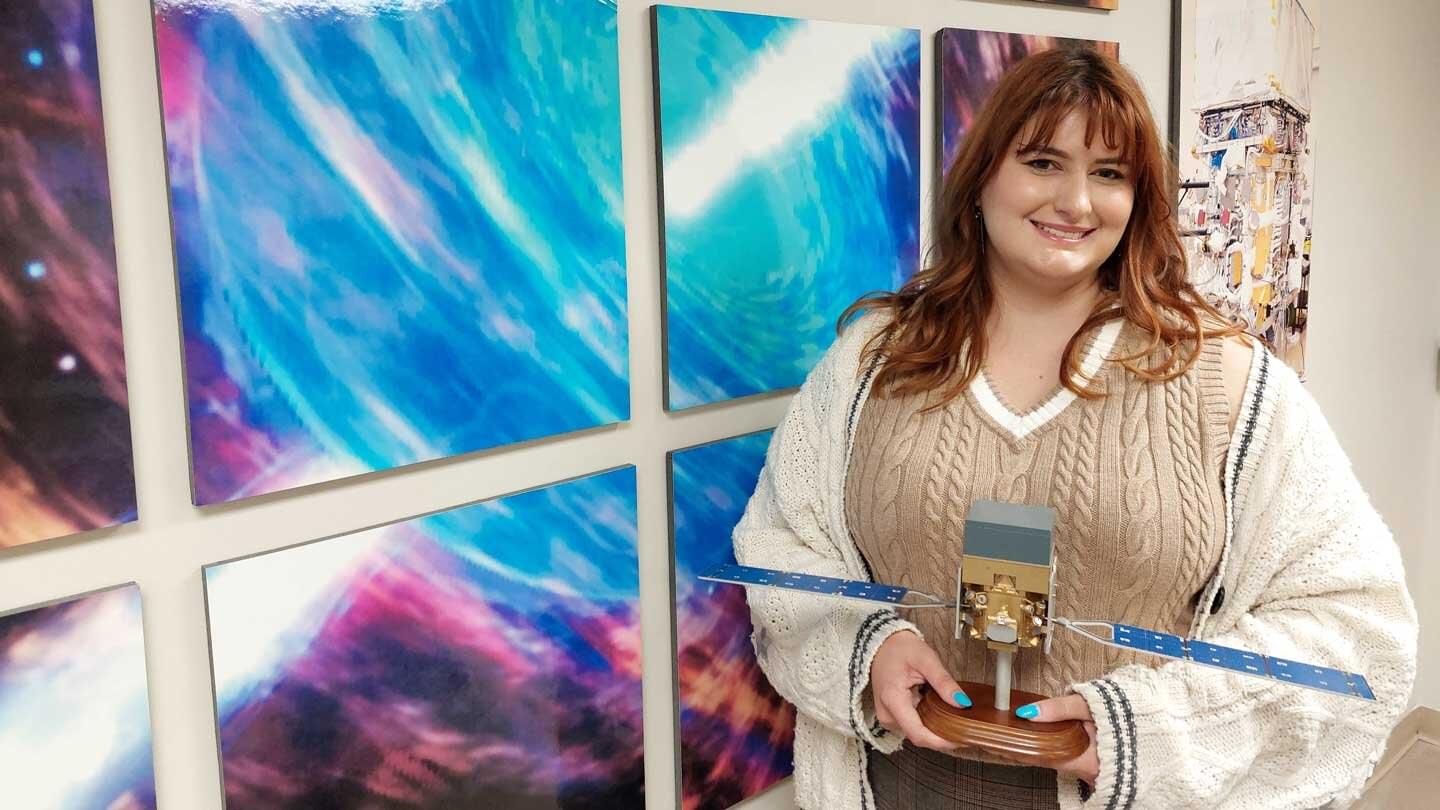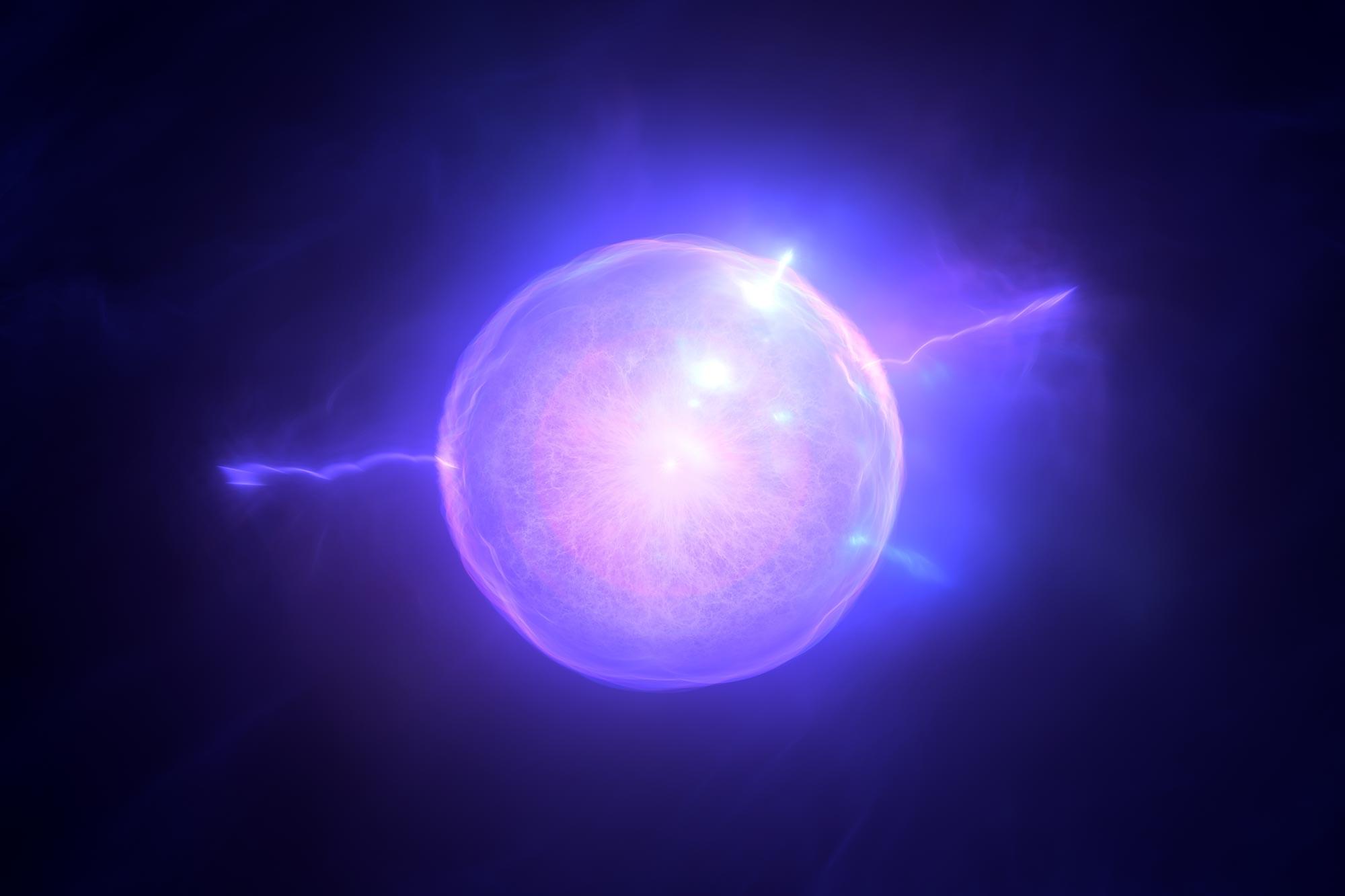All experiments broke records in the final full operating year of the third run of the LHC.
After a few final laps around the ring, the beams of the Large Hadron Collider (LHC) were paused at 6.00 a.m. on Monday, 8 December for the usual year-end technical stop. Launched on 5 May, the LHC’s 11th year-long run of high-energy physics broke a new record for integrated luminosity by delivering 125 fb-1 to both the ATLAS and the CMS experiments. Over the full lifetime of the LHC, ATLAS and CMS have now each delivered an integrated luminosity of 500 fb-1, equating to approximately 50 million billion particle collisions.
All four LHC experiments performed extremely well throughout the 2025 proton run, detecting more collisions than in any previous year and reporting data-taking efficiencies of more than 90%. LHCb continued to benefit from the significant upgrades that were completed in 2023, further increasing its recorded luminosity to a new record of 11.8 fb-1 in 2025.
